A-Z of Commoning and the New Forest
We produce and distribute thousands of copies of our A-Z guide of to help people learn more about the commoning animals, New Forest way of life and rules of the area to keep everybody safe.
If you would like a paper copy of our A-Z or think you can help stock or distribute it then please contact us
Adjacent Common
See ‘Crown Land and Adjacent Commons’
Agisters
 Agisters are the officials who look after the ponies, cows, pigs, sheep and donkeys that live on the Forest. The name comes from the word ‘agist’ which means to charge for letting animals graze your land.
Agisters are the officials who look after the ponies, cows, pigs, sheep and donkeys that live on the Forest. The name comes from the word ‘agist’ which means to charge for letting animals graze your land.
Agisters spend much of their time on horseback. Today they use mobile phones, but fifty years ago they had to send post-cards to keep in touch!
Each Agister has a ‘beat’ in the Forest. You should get to know your local Agister, and call him if you see a sick or injured animal on the Forest. The Agisters work for the Verderers (see V), and their phone numbers are available on the Verderers website.
Ancient and Ornamental areas
or A&O areas, are parts of the Forest that contain particularly old and impressive trees. 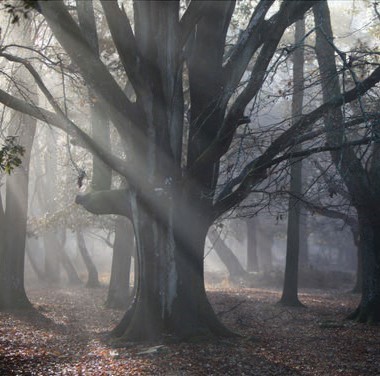 There are special rules for how the A&O areas are managed.
There are special rules for how the A&O areas are managed.
Some of the trees in the A&O areas are ‘pollards’, which means that their trunks were once cut across at about head height. Pollarding makes lots of new branches grow where the trunk is cut, and also makes the trunk grow very thick.
If you see a pollard oak it must be well over 300 years old, because pollarding oaks in the New Forest was banned in 1698 by Parliament. The New Forest was an important source of wood for building ships for the navy, and pollarding was causing a shortage of long timbers.
Ants
There are about fifty types of ant in the UK, and more than half can be found in the New Forest.
The Southern Wood Ant creates huge nests among the trees in the Forest, made out of pine needles, leaves and twigs. The nests can be a metre or two across. Be careful not to get too close, as the ants spray formic acid when they feel threatened, and they can bite.
The New Forest is also home to the rare Bog Ant which spends its life in and around some of the Forest bogs.
Beaulieu Road
Beaulieu Road is where ponies are bought and sold at a special sales yard near Beaulieu 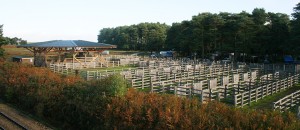 Road railway station. The link to the railway is from the days when ponies were sold all over the country, with some going to work in coal mines.
Road railway station. The link to the railway is from the days when ponies were sold all over the country, with some going to work in coal mines.
The ponies are kept in wooden pens then taken to be shown in a sales ring. There are just a few sales every year. The dates are published by the New Forest Livestock Society.
The New Forest Trust holds the lease for the sales ground, and helps to cover the cost of the sales by paying the rent and insurance.
Boiling mounds
Boiling mounds are ancient piles of flint that have been heated by fire. The mounds are found near sources of water, sometimes next to shallow hollows in the ground. The theory is that they were used by our ancestors to boil water. The flints would have been put in a fire until they were very hot, then dropped into the water in the hollow. Boiling mounds are common across the Forest.
Bottom
Bottom is an old word for a valley floor. There are several strangely named bottoms in the New Forest, including Dead Man’s Bottom and even Slap Bottom!
Browsing line
Most of the deciduous trees in the open Forest are bare of leaves and twigs below a line about two metres from the ground, because the browsing ponies, deer and cattle keep them stripped. The browsing line is a very noticeable feature of the Forest.
Byelaws
Bylaws are rules about what can and can’t be done in the Forest. Forestry England and the National Trust each have byelaws for the parts of the Forest they own or manage.
The Verderer’s byelaws apply across the Forest, and are mainly about commoning- for example, there’s a rule that ponies living out on the Forest can’t be shod. The bylaws are there to protect the Forest, so get to know them. You can download the Verderers’ byelaws here.
Camping and caravanning
Camping and caravanning is allowed only on authorised sites in the Forest. At one time you could set-up camp anywhere on the Forest provided you paid for a permit, but so much damage was done by people driving off the tracks that the rules had to be tightened.
In those days the Forest keepers had to collect fees from campers, and would hand out tickets to those who had paid.
Carr
Carr is a type of ground that is turning from a bog to a wood. When the conditions are right, reeds and other tall plants grow in bogs, and over the years the soil formed from dead reeds and plants accumulates, causing the ground level to rise above the surrounding water level of the bog.
Trees such as willow and ash then colonise the new ground, and they cause the ground to dry out further, to the point where other types of trees such as oak and beech can become established.
Cattle
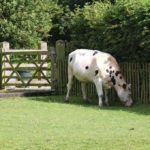 Cattle can be turned out onto the Forest by people who have commoning rights. The fee for turning out a cow is the same as the fee for a pony.
Cattle can be turned out onto the Forest by people who have commoning rights. The fee for turning out a cow is the same as the fee for a pony.
The Cattle on the New Forest are generally docile and ignore people but they can become aggressive when they, or their offspring, might be threatened by dogs, so it is always best to keep away from them, as they are big animals and could easily cause serious injury. If you feel threatened and have a dog on a lead, let the dog off the lead, move away and let the dog fend for itself.
Charcoal
Charcoal is made by burning wood on a fire that is starved of oxygen. The process drives almost all of the moisture out of the wood, leaving a fuel that is easy to light and burns at a higher temperature than wood does.
Charcoal burning used to be common on the Forest. The wood was stacked in a mound that was covered in turf or clay. A small hole in the covering at the top and at the bottom of the mound was made to allow just enough air to feed the fire without burning the wood completely. Making charcoal was a dirty job, but it was also a skilled one—if you let in too little air you wouldn’t convert the wood into charcoal, and if you let in too much air the wood burned away completely.
Common Rights
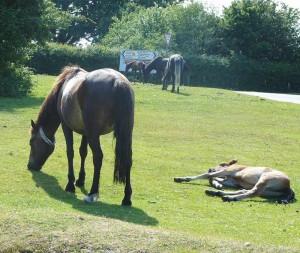
Common Rights are at the heart of the working of the New Forest. The rights are attached to land – about 800 Forest properties have them. There are different types of common rights, which are all explained in this guide. The most important is the right of ‘pasture’, which allows commoners to ‘turn out’ ponies, donkeys and cattle to graze the open Forest.
The commoners’ animals eat down the undergrowth. Without this grazing the Forest would look totally different, so commoning is vital to keep the Forest the way it is. The ponies are sometimes called ‘the architects of the Forest’. Many of the people who own properties with commoning rights don’t use the rights, possibly because it takes time and money to have animals on the Forest and to look after them properly.
Commoners Defence Association
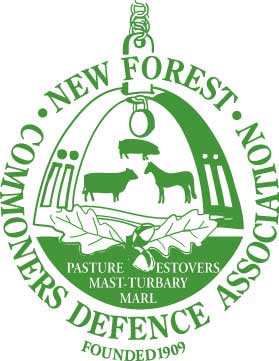 Many commoners join the ‘Commoners Defence Association’ (the CDA). The name goes back to times when the commoning way of life seemed to be under attack. The CDA still defends the rights of commoners, and works hard to make sure that animals on the Forest are looked after properly.
Many commoners join the ‘Commoners Defence Association’ (the CDA). The name goes back to times when the commoning way of life seemed to be under attack. The CDA still defends the rights of commoners, and works hard to make sure that animals on the Forest are looked after properly.
Deer
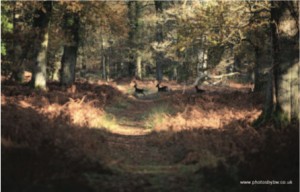 Deer are truly wild, unlike the Forest ponies that belong to the commoners. There are five different types of deer in the Forest: Fallow, Muntjac, Red, Roe and Sika. The sika deer are from Japan (sika means deer in Japanese). The Keepers (see K) have to control the numbers of deer, otherwise there would be too many for the Forest.
Deer are truly wild, unlike the Forest ponies that belong to the commoners. There are five different types of deer in the Forest: Fallow, Muntjac, Red, Roe and Sika. The sika deer are from Japan (sika means deer in Japanese). The Keepers (see K) have to control the numbers of deer, otherwise there would be too many for the Forest.
Dogs
Dogs. Many people walk their dogs on the Forest, and most keep them under control. But dogs have killed and maimed commoners’ animals, so make sure your dog is under control. In the Forest some birds nest on the ground or low-down in the bushes, so walking your dog on a lead during the nesting season is a good idea. The New Forest Dog Owners Group (NFDOG) has common-sense advice about dogs on the Forest.
Drifts
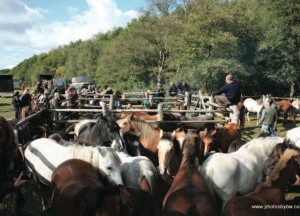 Drifts are the annual round- ups, organised by the Agisters, where the commoners’ animals are herded into pounds and marked (see M). There are lots of reasons for rounding-up animals: to worm them, to brand them, to check their condition, to get them off the Forest if they are unwell, or to take them to a sale.
Drifts are the annual round- ups, organised by the Agisters, where the commoners’ animals are herded into pounds and marked (see M). There are lots of reasons for rounding-up animals: to worm them, to brand them, to check their condition, to get them off the Forest if they are unwell, or to take them to a sale.
Drifts can be dangerous for spectators, and there can be problems when people get in the way of the ponies being rounded-up. So take care when you see the warning notices that are put out by the Agisters, and please keep clear of the drift if you’re not one of the official helpers.
Encroachment
Encroachment means fencing off Forest land without permission. Sometimes it happens by mistake when people put new fences in the wrong place. Sometimes it’s deliberate. Either way, the Verderers (see V), the Commoners Defence Association, and the Forestry Commission will take action against it. If you need a new fence in the Forest make sure it goes in the right place- moving it could be expensive!
Estovers
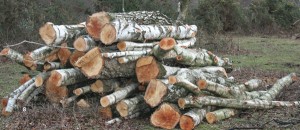 Estovers is the right to have wood from the Forest for fuel. The Forestry Commission used to pay people to give up the right of estovers, so not many properties still have it today. Taking wood from the Forest is theft, and cutting the Forest trees without permission is criminal damage.
Estovers is the right to have wood from the Forest for fuel. The Forestry Commission used to pay people to give up the right of estovers, so not many properties still have it today. Taking wood from the Forest is theft, and cutting the Forest trees without permission is criminal damage.
Stacked firewood is measured in ‘cords’. A cord is 128 cubic feet, which would be a stack 4ft by 4ft by 8ft. The volume includes the air between the logs, so the amount of actual wood depends on how closely the logs are stacked. The pile of logs in the picture is about two cords. It’s about 4 feet high, and the logs are 8 feet long. Keeping a house warm through the winter would have taken quite a few cords of wood!
Fences
Fences are very important in the Forest. Fencing the boundary, or the ‘perambulation’, of the Forest, was finished in the 1960s. Before then, animals used to wander off to neighbouring towns and villages, and had to be led back. They were called ‘lane creepers’ because they worked down the roads feeding on the verges and hedges. If they broke onto farmland they would damage crops, so farmers used to catch them and charge commoners to let them out. Today fences help prevent accidents by keeping animals away from the busier roads.
Fern
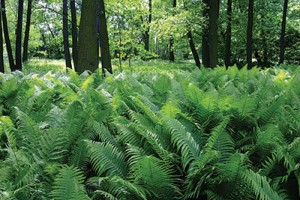 Fern, or bracken, used to be cut and collected by commoners as a cheaper alternative to straw for bedding animals. They had to get permission to do it from the Forest Keeper (see K). Commoners would build big stacks of fern, and thatch the tops with reeds to keep the rain off. Fires of dried fern were used by commoners to burn the bristles from the skin of slaughtered pigs.
Fern, or bracken, used to be cut and collected by commoners as a cheaper alternative to straw for bedding animals. They had to get permission to do it from the Forest Keeper (see K). Commoners would build big stacks of fern, and thatch the tops with reeds to keep the rain off. Fires of dried fern were used by commoners to burn the bristles from the skin of slaughtered pigs.
Fireworks
Fireworks scare animals, and cause stampedes and accidents. They can also cause pregnant animals to abort. The best idea is not to have fireworks near the open Forest where there are animals about. If you must have fireworks then let the local farmers and horse-owners know. Give them plenty of time to get their animals in. Ponies and other animals can be very stressed by sudden loud noises, so think twice before buying fireworks if you live in or near the Forest.
Gardens
Gardens and animals don’t mix. Gardens by the open Forest need to be securely fenced, or animals might break in and cause all sorts of trouble. One pony had to be rescued by the fire brigade after walking onto the green plastic cover of a swimming pool, probably thinking it was grass.
Some garden plants are poisonous to animals, so people need to be careful about what they plant close to the Forest, as hungry animals will try nibbling anything that grows near a fence. Garden waste should never be dumped on the Forest, as it can be poisonous. Grass clippings are particularly dangerous for ponies and can kill them.
Gorse
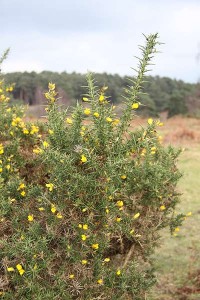 Gorse grows in many parts of the Forest, in thick clumps the animals use as shelter. Even though its leaves are spiny, the animals still eat it, especially in winter. It’s also known as furze (pronounced fuzz). Some commoners remember collecting the furze, and chopping it in a chaff cutter with mangles to make a feed for their animals.
Gorse grows in many parts of the Forest, in thick clumps the animals use as shelter. Even though its leaves are spiny, the animals still eat it, especially in winter. It’s also known as furze (pronounced fuzz). Some commoners remember collecting the furze, and chopping it in a chaff cutter with mangles to make a feed for their animals.
When gorse gets old, it becomes spindly, so it’s burned or cut- down to re-grow thick and bushy again. The New Forest gorse is home to lizards and other wildlife, including a very rare bird called the Dartford Warbler. That’s one reason why there are strict rules about how and when the gorse is burned.
Haunts
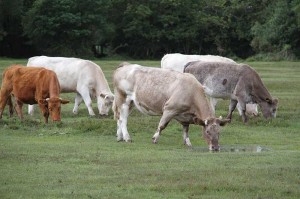 When an animal is let out onto the Forest it tends to ‘haunt’ particular areas, rather than roaming the Forest at large. If a commoner buys an animal from another part of the Forest, it will want to go back to its haunt. One old commoner’s trick was to tie a pony from the north of the Forest to one from the south, so they’d both settle down rather than pull in opposite directions!
When an animal is let out onto the Forest it tends to ‘haunt’ particular areas, rather than roaming the Forest at large. If a commoner buys an animal from another part of the Forest, it will want to go back to its haunt. One old commoner’s trick was to tie a pony from the north of the Forest to one from the south, so they’d both settle down rather than pull in opposite directions!
Hit and Run
Hit and Run Animal accidents have been a sad sight on Forest roads ever since cars were invented, and now an animal is killed or injured nearly every day. If you’re involved in an accident make sure you call the Agister right away, and let them know exactly what’s happened. In the Forest no-one is hated more than the hit-and-run driver. An injured animal can’t call for help, and might wander in pain for days before being found and treated. That’s why rewards of up to £1,000 are offered for information that helps to find hit- and-run drivers.
If you know anything about a hit- and-run accident in the Forest, call the police on 101.
Inclosures
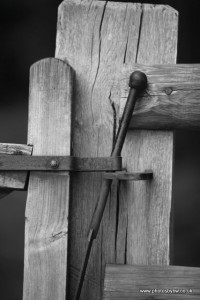 Inclosures (or enclosures) are parts of the Forest that are fenced to keep out the commoners’ animals so that young trees can grow. If the animals get into an inclosure they can cause a lot of damage, so it’s important to keep the gates closed.
Inclosures (or enclosures) are parts of the Forest that are fenced to keep out the commoners’ animals so that young trees can grow. If the animals get into an inclosure they can cause a lot of damage, so it’s important to keep the gates closed.
Once its trees have grown too big for the animals to harm, an inclosure can be thrown open again. Many were planted long ago and now have spectacular trees. What many people don’t realise is that the fences around the inclosures are important for the drifts, as they help to funnel the animals in particular directions.
Information
There are many websites with information about commoning and the New Forest. For example:
www.verderers.org.uk has information from the Verderers (see V) who set byelaws for the Forest.
www.nfls.org.uk which is the website of the New Forest Livestock Society, explains the working of the Beaulieu Road sales yard.
www.nfcda.co.uk has information about the New Forest Commoners Defence Association.
Jacks and Jennies
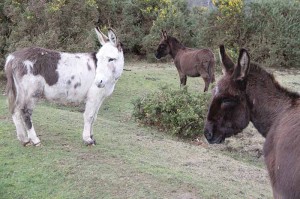 Jacks and Jennies are male and female donkeys. The New Forest rules treat donkeys in the same way as ponies, as both count as ‘equines’. There are only a hundred or so donkeys on the Forest, compared with a few thousand ponies.
Jacks and Jennies are male and female donkeys. The New Forest rules treat donkeys in the same way as ponies, as both count as ‘equines’. There are only a hundred or so donkeys on the Forest, compared with a few thousand ponies.
Keepers
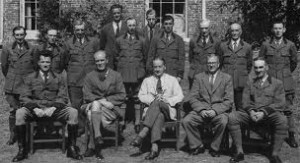 Keepers work for the Forestry Commission. They have lots of different jobs to do in looking after the Forest. They have to make sure that the numbers of deer and other other wild animals don’t get out of control. They will keep an eye on the state of fences, gates, drains, and ditches that need to be maintained. And they have to deal with poaching and vandalism, both of which are still serious problems in the Forest today.
Keepers work for the Forestry Commission. They have lots of different jobs to do in looking after the Forest. They have to make sure that the numbers of deer and other other wild animals don’t get out of control. They will keep an eye on the state of fences, gates, drains, and ditches that need to be maintained. And they have to deal with poaching and vandalism, both of which are still serious problems in the Forest today.
The job of the keeper was often handed down from father to son, which was a good way to make sure that knowledge about the Forest was passed from one generation of keepers to the next. Each keeper had his own beat, and got to know the commoners in his area.
Lawns
Lawns are the areas of the New Forest that have been completely grazed down. They are very special to the look of the area, and exist only because of the commoners’ animals. Without the animals the lawns would quickly go back to being scrubland, and the distinctive character of the New Forest would be changed. That’s one of the reasons why commoning is encouraged and supported here. The Forest lawns are a unique eco-system, of special interest to natural science, so they are strongly protected by law.
Love the forest
Love the forest is a scheme launched by the New Forest Trust, giving you the chance to get involved in helping to preserve the Forest’s ancient traditions and conserving this special place.
Find out more about how to make a donation to the scheme, what your money will go towards, and the difference you can make at our Love the Forest page.
Marking fees
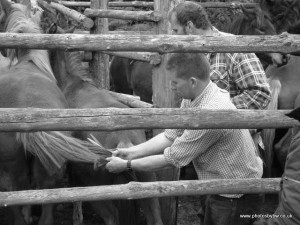 Marking fees are annual charges that commoners pay for each of the animals they keep on the Forest. The fees contribute towards the costs of managing the Forest. They’re called marking fees because the Agisters mark each animal to show it’s been paid for.
Marking fees are annual charges that commoners pay for each of the animals they keep on the Forest. The fees contribute towards the costs of managing the Forest. They’re called marking fees because the Agisters mark each animal to show it’s been paid for.
The Agisters mark ponies and cattle by cutting their tail hairs in a certain way. A year later, when the fees have to be paid again, the tail hairs will have grown out, so the Agisters can mark the animals again.
One of the jobs of an Agister is to collect the marking fees in their area, and to make sure that commoners don’t turn out animals without paying. The records of marking fees are kept by the Verderers (see V), so it’s possible to see how many cows, pigs, ponies and sheep have been turned out over the years.
Marl
Marl is another of the common rights in the New Forest. Marl is a type of limey clay that can be spread on poor ground to make it more fertile. The right of marl allows a commoner to dig marl from the Forest to use as a fertiliser. Nobody seems to use the right any more, but you can still see pits in the Forest where marl used to be dug out.
Mast
Mast is another word for ‘pannage’ (see P).
National Parks
National Parks are areas of the UK that are given extra protection because of their special landscape, wildlife and culture.
The New Forest has been a National Park since 2005. Although it is one of the smallest National Parks, it gets more visitors than most of the others. The New Forest National Park Authority’s website is at:
www.newforestnpa.gov.uk
Oral history
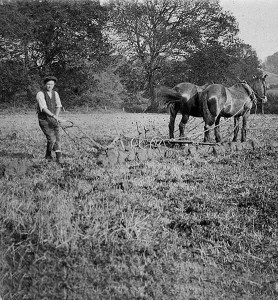 The New Forest Trust has been making audio recordings of elderly commoners and other people with special links to the Forest. These ‘oral history’ recordings, which are first-hand memories of commoning life from about 1930 onwards, were made with financial support from the Heritage Lottery Fund. At www.newforestmemories.org.uk you can play some of the recordings, and hear fascinating stories of ‘lane creepers’, the point-to-point races, pony sales, and many of the other topics in this guide.
The New Forest Trust has been making audio recordings of elderly commoners and other people with special links to the Forest. These ‘oral history’ recordings, which are first-hand memories of commoning life from about 1930 onwards, were made with financial support from the Heritage Lottery Fund. At www.newforestmemories.org.uk you can play some of the recordings, and hear fascinating stories of ‘lane creepers’, the point-to-point races, pony sales, and many of the other topics in this guide.
Pannage
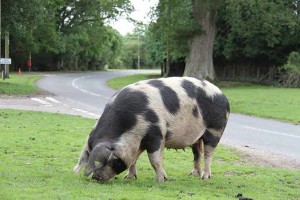 Pannage is the common right to turn pigs out (the word pannage means the food that pigs can find on the ground in a forest, especially acorns and other fruit dropping from trees). The ‘pannage season’ is the time of year when pigs are allowed to live out in the Forest. The job of the pigs is to eat the acorns, which are poisonous to the other animals.
Pannage is the common right to turn pigs out (the word pannage means the food that pigs can find on the ground in a forest, especially acorns and other fruit dropping from trees). The ‘pannage season’ is the time of year when pigs are allowed to live out in the Forest. The job of the pigs is to eat the acorns, which are poisonous to the other animals.
The dates of the pannage season are set by the Verderers (see V). Usually the pannage season runs from September to December, but the season can be extended if there’s a particularly heavy acorn crop.
Point-to-point
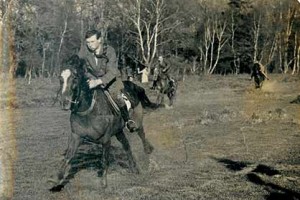 Point-to-point just means a horse race in most parts of the country, but the New Forest is one of the few places that has a ‘proper’ point-to-point, where riders race across open country taking any route they like between the starting point and the finishing point.
Point-to-point just means a horse race in most parts of the country, but the New Forest is one of the few places that has a ‘proper’ point-to-point, where riders race across open country taking any route they like between the starting point and the finishing point.
To make the job harder, the starting point is kept a secret until just before the race. The competitors turn up at a meeting place where they are weighed-in (the race is a handicap), then the starter leads them off through the Forest to the actual starting point. Some riders might have no idea where they are when the race begins, and the competitors can set-off in different directions. The races are usually held on Boxing Day. Today the organisers of the race are very concerned about the safety of the horses, riders and spectators. But not so long ago the riders didn’t even bother to wear hard hats.
Pony catching
Pony catching. Most of the ponies out in the Forest are untamed, and not used to being handled, so it can be tricky to catch them if they need to be brought in. Some old commoners had special ways of catching ponies. They would hide a ‘ring rope’, or noose, in a narrow path between bushes, and then carefully stalk the pony to persuade it to go down the path and catch itself in the rope. ‘Colt hunting’ is another way of catching ponies, by following them on horseback and getting hold of them. It takes a lot of nerve and skill!
Rides
Rides are the clear tracks between the trees in the Forest plantations. The main purpose of the rides is to allow access for people working on the Forest, but some of them get used for recreation too. Not so long ago the rides had to be kept clear with scythes. It was a tough job, with miles of track to cut in the heat of the sun, with all the gnats and other biting Forest insects.
Sawmills
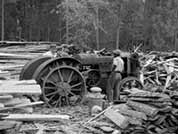 Sawmills powered by tractors were all over the Forest at one time. By today’s standards the equipment was very labour-intensive, although it was a huge improvement on sawing by hand. It was dangerous too, with none of the safety features that would be taken for granted now. It’s still possible to see the old equipment put to work at the New Forest Show.
Sawmills powered by tractors were all over the Forest at one time. By today’s standards the equipment was very labour-intensive, although it was a huge improvement on sawing by hand. It was dangerous too, with none of the safety features that would be taken for granted now. It’s still possible to see the old equipment put to work at the New Forest Show.
Stallions
Stallions. Special rules apply to stallions on the Forest. They are only let out in late spring, so their foals are born in the following spring when there is more grass available. The rules are part of the ‘Stallion Scheme’ which was set-up to improve the quality of the ponies and to cut-down the number of unwanted foals. The stallions have to be approved before they are let-out, to check that they will pass-on good characteristics to their young. The number of stallions let out on the Forest is reviewed every year.
Ponies that are born to stallions on the Forest are said to be ‘Forest bred’. Ponies are the only domestic animals that breed on the Forest- the byelaws don’t allow commoners to turn out bulls, boars or rams.
Stock
Stock means the animals that commoners turn out on the Forest. The number of animals varies from year to year, but nowadays averages around 7,000. More than half of the animals are ponies, and about a third are cattle. Most of the rest are pigs, with just a hundred or so donkeys and sheep.
The New Forest Association
The New Forest Association is one of the oldest conservation charities in the world, and was set up to fight plans to do away with the common land in the Forest. Today it is still an active watchdog, keeping an eye on the government organisations that run the Forest.
The New Forest Centre
The New Forest Centre at Lyndhurst is a great place to go to learn more about commoning and the Forest. There is a museum with interesting displays of all aspects of Forest life. The Centre, which is just off the main car park in the middle of the village, is also the home of the Christopher Tower reference library, which is a specialist collection of books, photographs and other documents about the Forest.
The New Forest Trust
The New Forest Trust is a charity dedicated to preserving the special qualities of the Forest. And because commoning is so important to the Forest, much of the Trust’s work aims to help commoning. One of the Trust’s projects has been to provide reflective collars for the ponies, so they stand less chance of being hit by cars at night. The Trust also runs the New Forest Diamond Jubilee Award, which recognises people who have helped protect or promote the Forest.
The Queen’s House
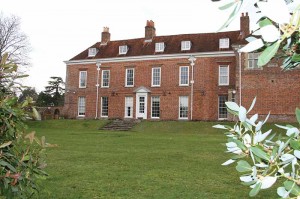 The Queen’s House in Lyndhurst used to be a royal residence, and is now the New Forest headquarters of the Forestry Commision, and the home of the Verderers (see V). There has been a royal house on the site since the 13th century. The Queen’s House was built over 300 years ago in the reign of Charles 1st, when it would have been known as The King’s House.
The Queen’s House in Lyndhurst used to be a royal residence, and is now the New Forest headquarters of the Forestry Commision, and the home of the Verderers (see V). There has been a royal house on the site since the 13th century. The Queen’s House was built over 300 years ago in the reign of Charles 1st, when it would have been known as The King’s House.
The ‘Atlas of Forest Rights’ is held at The Queen’s House. The atlas has detailed maps of the Forest, showing where commoning rights are attached to land. You can inspect the atlas at The Queen’s House, but you have to book an appointment and pay a fee.
Turbary
Turbary is the common right to cut turf for fuel. Turf isn’t much used now, but there are still commoners who remember collecting it. The turf was cut into small slabs, and pairs of slabs would be stood up- one leaning against the other- so that air could pass between them and help them to dry out.
There were special rules about how and where the turf could be cut, which were to prevent the land from being completely stripped bare. A commoner wanting turf would have to apply to the local keeper for permission, and would get a ‘ticket’ to cut turf from a particular part of the Forest. The Verderers (see V) could set charges for turf cutting. Under the New Forest Act of 1877, the maximum charge was sixpence for every thousand turves.
Unsafe driving
Unsafe driving causes accidents. Don’t forget that the animals have right of way on the Forest roads. The number of animal accidents in the Forest tends to get worse in the winter when there are more people driving in the dark. At night, unless you are driving slowly, it can be really hard to see animals in the road until you are too close to them to stop, so you must keep your speed down. If you are blinded by lights from oncoming cars slow right down to well under 20 mph.
Verderers
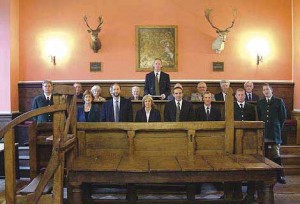 Verderers are the people who set the Forest byelaws and regulate the use of common rights in the Forest. The name comes from the French word ‘vert’, which means green. There are ten Verderers- half are appointed by the government, and half are elected by people with commoning rights.
Verderers are the people who set the Forest byelaws and regulate the use of common rights in the Forest. The name comes from the French word ‘vert’, which means green. There are ten Verderers- half are appointed by the government, and half are elected by people with commoning rights.
The five elected Verderers serve six year terms. The elections are staggered; two places will be up for the vote at one election, and three at the next, the elections being held three years apart.
In law, the Verderers have a similar status to magistrates. The ‘Verderers Court’ meets every month, except in August, at The Queen’s House in Lyndhust. The public can attend, and can raise issues for the Verderers to consider- that’s known as ‘making a presentment’ to the Court.
The Verderers set the marking fees, which are part of their byelaws. Verderers also have the power to block certain types of planning applications on Crown lands within the Forest. The Verderers have often acted as guardians of the Forest, protecting it from outside pressures.
The chairman of the Verderers is known as ‘The Official Verderer’, and is appointed by Her Majesty the Queen.
Welfare
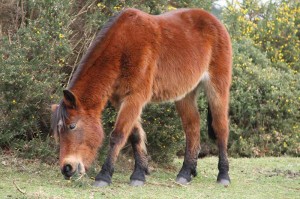 Welfare of the animals on the Forest is taken very seriously. The Verderers have rules for checking the condition of the animals. If an animal is too thin its owner has to take it off the Forest and feed it up before letting it out again. Animals also have to be taken off the Forest if they are sick or injured.
Welfare of the animals on the Forest is taken very seriously. The Verderers have rules for checking the condition of the animals. If an animal is too thin its owner has to take it off the Forest and feed it up before letting it out again. Animals also have to be taken off the Forest if they are sick or injured.
Twice a year the Verderers organise ‘welfare tours’ where experts from organisations such as the RSPCA and the British Horse Society tour the Forest to inspect the stock. The findings from the tours are reported on the Verderers’ website.
If you see any sick or injured ponies, donkeys, pigs, cows or sheep on the Forest you should get in touch with your Agister (who is the person on the ground responsible for welfare), or call the Verderers’ office on 023 8028 2052. Try to give them really clear information about what the animal looks like, and where it is. Saying that you’ve seen ‘a brown pony in the woods’ isn’t much help when there are hundreds of them!
X
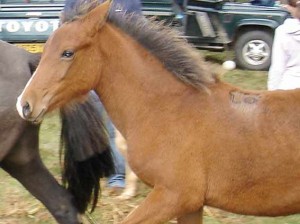 X is a letter that appears in many of the distinctive brand marks of the New Forest. Every commoner who turns out ponies, donkeys or cows must have a registered brand, and mark their animals in a certain way. The Agisters know the brands, so they can see who owns a given pony.
X is a letter that appears in many of the distinctive brand marks of the New Forest. Every commoner who turns out ponies, donkeys or cows must have a registered brand, and mark their animals in a certain way. The Agisters know the brands, so they can see who owns a given pony.
There’s a charge to register a brand. The idea is to discourage people from registering brands they never intend to use. A brand has to be a simple, clear design that is easy to see and describe, otherwise the brands might get confused.
If a person sells a pony to another commoner, the new owner is meant to add their brand behind the original. It’s possible to see ponies with several brands where they’ve been sold on a few times, but it’s unusual.
Foals shouldn’t be branded too young, otherwise the brand will grow along with the foal and end-up looking too big.
Nowadays cattle have to be ‘freeze branded’, but ponies and donkeys can still be hot branded. The branding iron is left in a fire until it becomes red-hot, when just a quick touch against the pony’s side will create a clear mark. The branding doesn’t appear to hurt the ponies or cause any lasting distress.
Young Commoners
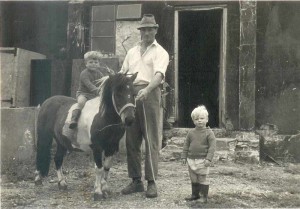 Young Commoners are important for the future of the New Forest. The Commoners Defence Association has set-up a Young Commoners group, and arranges educational events for young people who want to learn about commoning. The New Forest Trust played an important role in setting up the group.
Young Commoners are important for the future of the New Forest. The Commoners Defence Association has set-up a Young Commoners group, and arranges educational events for young people who want to learn about commoning. The New Forest Trust played an important role in setting up the group.
In olden days commoning skills were passed down ‘on the job’. There were always plenty of chores to keep children busy in the days before TV and computer games: chopping firewood, collecting fern, picking up acorns, clearing stones from hayfields, milking cows.
These jobs were done almost every day. And breaking-in ponies, or rounding them up, was an exciting and entertaining way for youngsters to spend the light summer evenings. Commoning was more of a necessity for some people in those days, rather than being a ‘lifestyle choice’ as it is for many today, so passing-on commoning know-how to children was an essential part of day-to-day life. Today, passing on the skills and know-how to youngsters is still important for keeping the culture of commoning alive for future generations. The museum at the New Forest Centre is full of displays to help young people get to know about the Forest and the commoning way of life.
Zoonoses
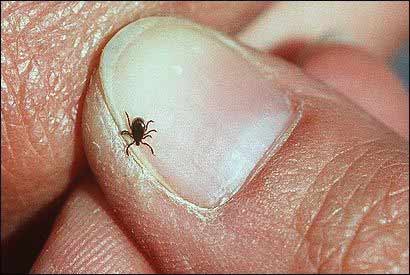 Zoonoses are diseases that can pass between animals and people. They’re relatively rare in this country. Rabies is probably the best known. Other examples include salmonella, ringworm, e-coli, Weil’s disease, orf, and Lyme’s disease.
Zoonoses are diseases that can pass between animals and people. They’re relatively rare in this country. Rabies is probably the best known. Other examples include salmonella, ringworm, e-coli, Weil’s disease, orf, and Lyme’s disease.
Lyme’s disease is the most common zoonose in the UK, according to government figures, but still rare- about a thousand cases being reported each year. It’s passed on by tick bites, and ticks are common in the New Forest. If you get bitten by a tick, you should keep an eye on the area of skin around the bite, as one of the most common signs of infection is a pink or red circular rash that develops around the bite some days afterwards. The rash is often described as looking like a bull’s-eye on a dart board.
The Health Protection Agency monitors reports of zoonoses, and produces annual reports about the numbers of cases.







 Many commoners join the ‘
Many commoners join the ‘


















